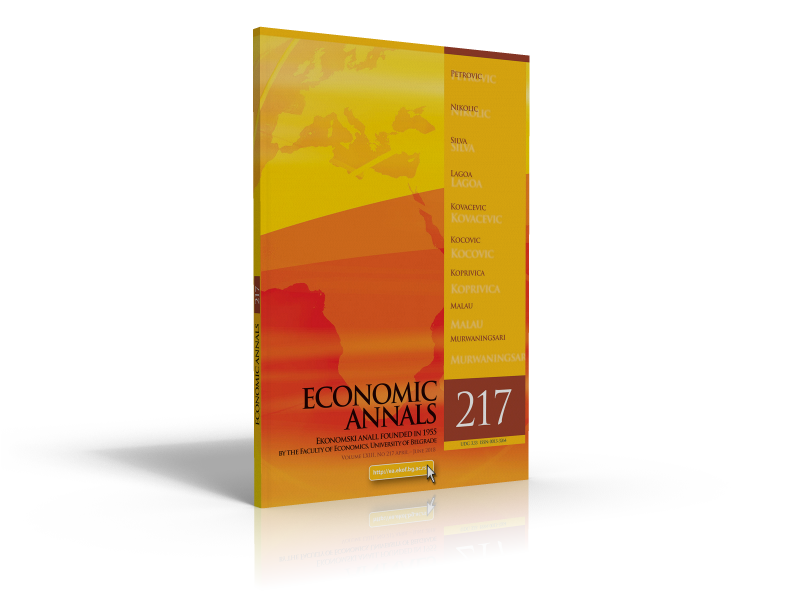STRUCTURAL AND CYCLICAL FACTORS OF SERBIA’S CURRENT ACCOUNT
##plugins.themes.bootstrap3.article.main##
##plugins.themes.bootstrap3.article.sidebar##
Radovan Kovačević
Abstract
This paper examines the impact of structural and cyclical factors on Serbia’s current account. We have applied several filters to turn off the long-term (structural) component and isolate the influence of cyclical factors. In this paper, we show that structural factors were more important determinants of the current account deficit in the full-time sample (1997- 2016), while cyclical factors showed a stronger impact in the post-crisis period when the deficit was reduced. Although they lost their intensity during the crisis and in the post-crisis period, the structural factors determine the trend of the current account balance in the long-term. For further improvement of the current account, measures to increase exports should be taken. The structural changes of production, the wider range of support for export financing to small and medium-sized enterprises, and the application of advanced technologies in manufacturing could help to reduce the trade deficit, making the current account deficit sustainable.
##plugins.themes.bootstrap3.article.details##
Keywords
Current account, cycles, structural factors, filtering methods, external debt, primary income
JEL Classification
C01, F14, F41
Issue
Section
Articles
How to Cite
Kovačević, R. (2018). STRUCTURAL AND CYCLICAL FACTORS OF SERBIA’S CURRENT ACCOUNT. Economic Annals, 63(217), 75-98. https://doi.org/10.2298/EKA1817075K
How to Cite
Kovačević, R. (2018). STRUCTURAL AND CYCLICAL FACTORS OF SERBIA’S CURRENT ACCOUNT. Economic Annals, 63(217), 75-98. https://doi.org/10.2298/EKA1817075K

